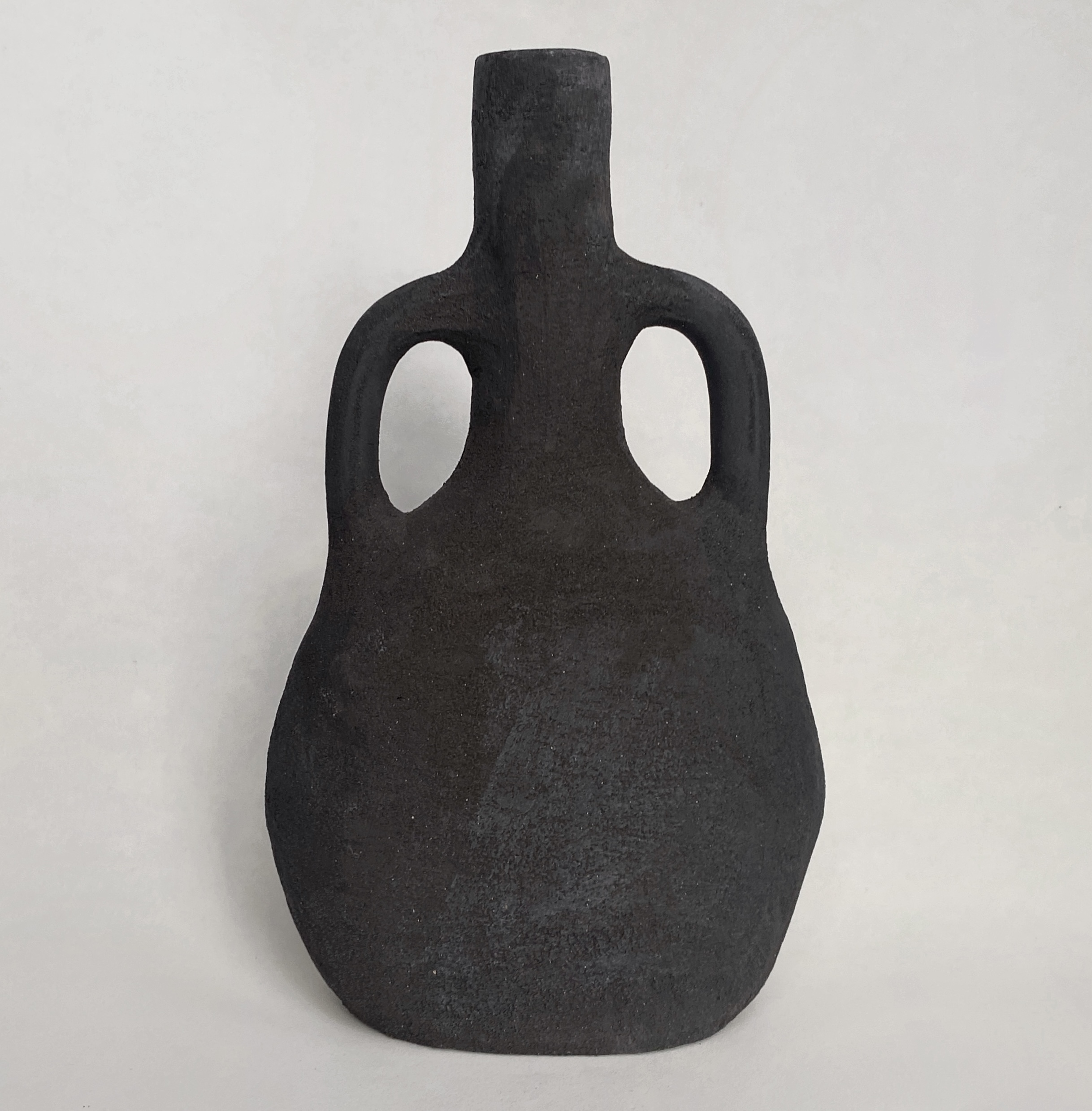















Inspired by ancient icons and vessels Esme’s work echos the forms of Neolithic fertility statues, exploring rituals of the human experience with clay.
Working from her garden studio on the South East coast of England, she is inspired by the textures of pebbles on the beach and the cliffs that surround them. Weaving ancient folklore of the sea and woodlands into the distinct silhouetted shapes of her work, she imagines her designs as 2D cut-outs and translates them into sculptural pieces, creating organic but unexpected forms which explore negative space.
Esme’s approach to ceramics focuses on the material, working with textured and heavily grogged clay. Experimenting with what is possible with the natural clay body, using raw, textured and burnished finishes, with hand-building techniques which have existed for millennia.
She continues to be fascinated by artefacts in museums and the cyclical nature of ceramics being rediscovered in the ground from which they came. Sometimes working with her own locally sourced wild clay, foraging and processing the clay for a deeper connection with the environment and the traditions of early pottery.
The tactile nature of hand building allows her to reflect on what may be contained within an object in both its functional and symbolic intent. When placed in modern environments and domestic settings it highlights the presence of ceramics in our everyday lives, using ceramics as we always have, both in the mundane and as objects of admiration.
Working from her garden studio on the South East coast of England, she is inspired by the textures of pebbles on the beach and the cliffs that surround them. Weaving ancient folklore of the sea and woodlands into the distinct silhouetted shapes of her work, she imagines her designs as 2D cut-outs and translates them into sculptural pieces, creating organic but unexpected forms which explore negative space.
Esme’s approach to ceramics focuses on the material, working with textured and heavily grogged clay. Experimenting with what is possible with the natural clay body, using raw, textured and burnished finishes, with hand-building techniques which have existed for millennia.
She continues to be fascinated by artefacts in museums and the cyclical nature of ceramics being rediscovered in the ground from which they came. Sometimes working with her own locally sourced wild clay, foraging and processing the clay for a deeper connection with the environment and the traditions of early pottery.
The tactile nature of hand building allows her to reflect on what may be contained within an object in both its functional and symbolic intent. When placed in modern environments and domestic settings it highlights the presence of ceramics in our everyday lives, using ceramics as we always have, both in the mundane and as objects of admiration.
